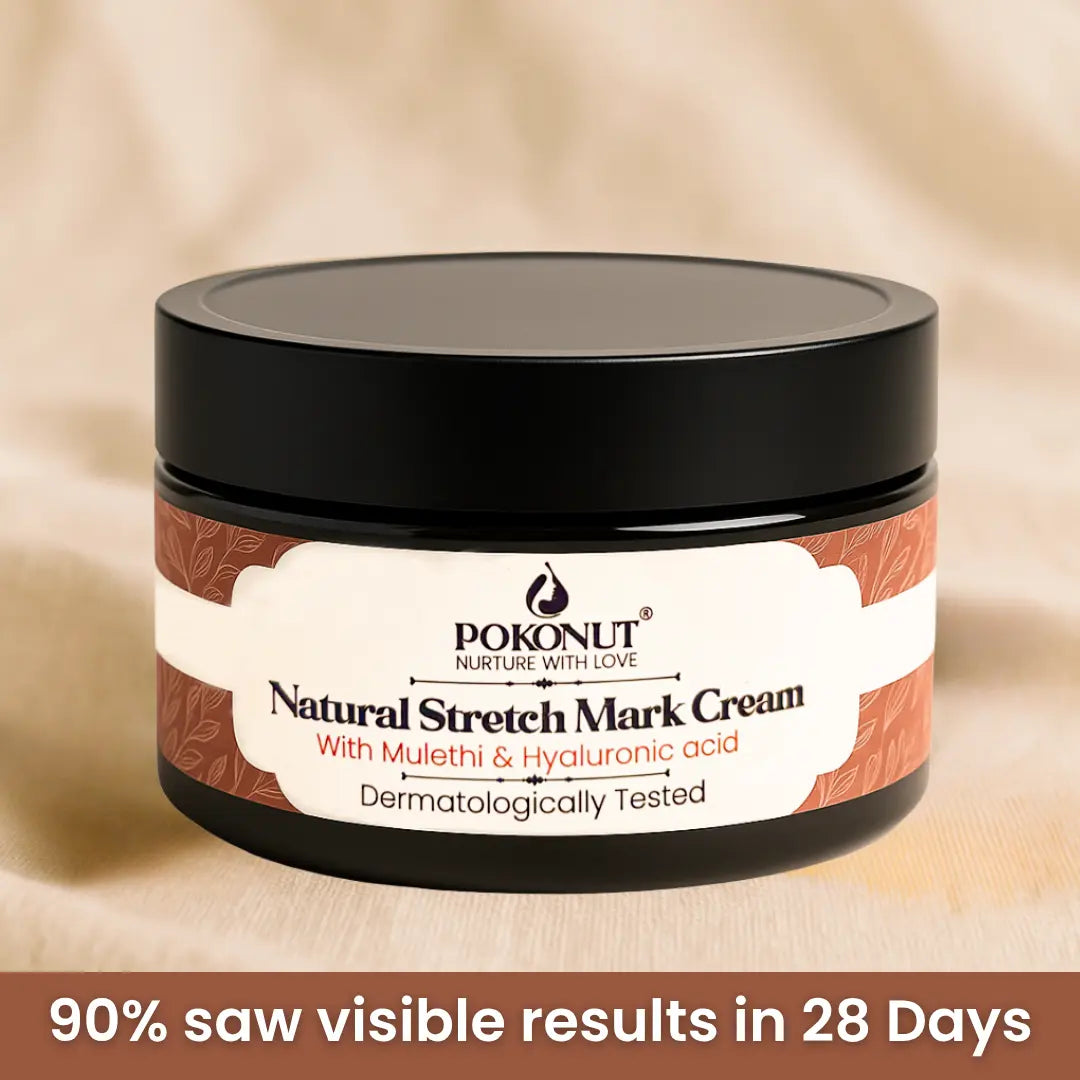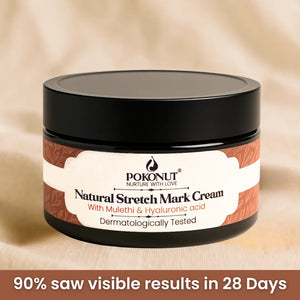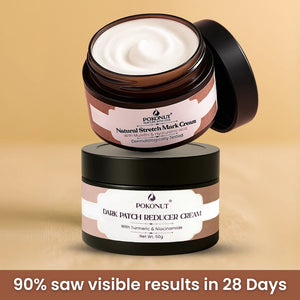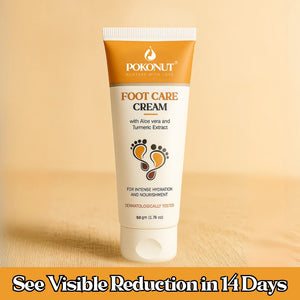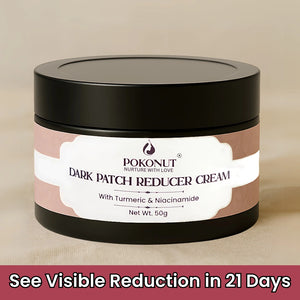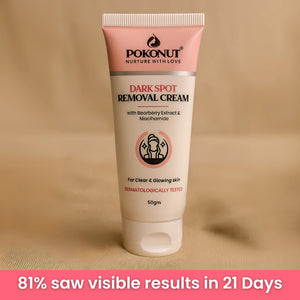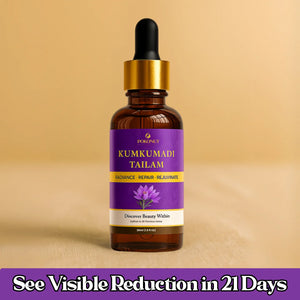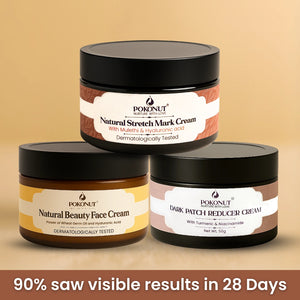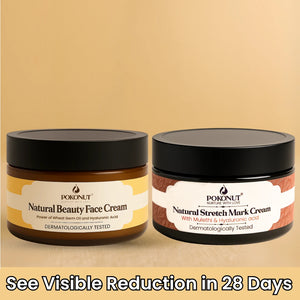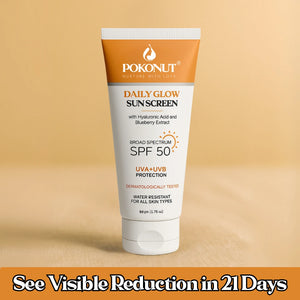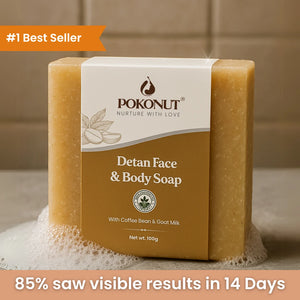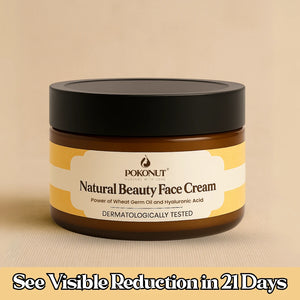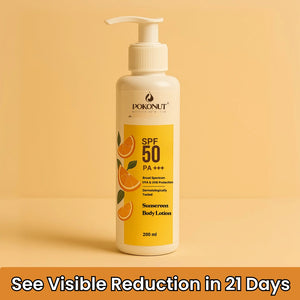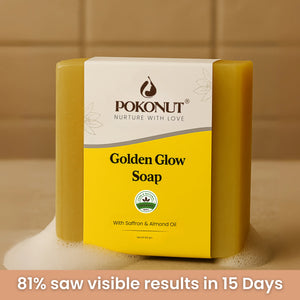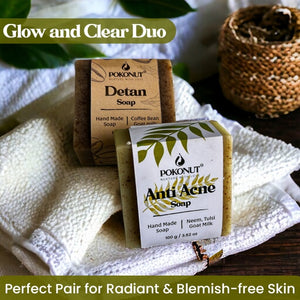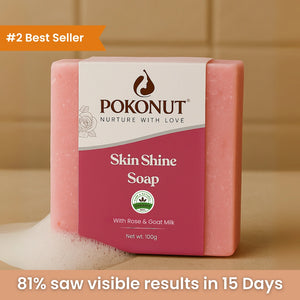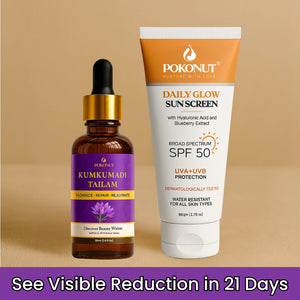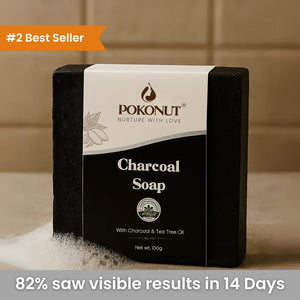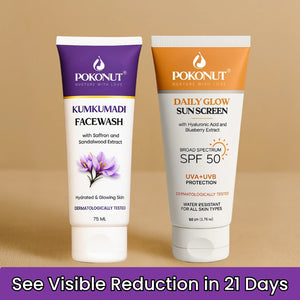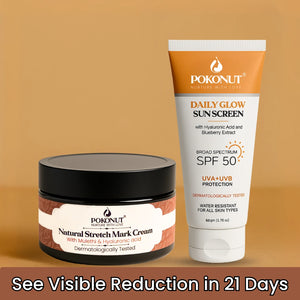Why Dermatologists Trust Kojic Acid for Monsoon Skin Woes?

Medically Reviewed By:
Dr. Mousumi Dash, BAMS
Written by Our Editorial Team
Still battling the stubborn pigmentation summer left behind? As monsoon rolls in with humidity and dull skin days, dermatologists turn to kojic acid to fade post-summer tans and prevent uneven pigmentation. Derived from fungi, kojic acid works by inhibiting tyrosinase — the enzyme responsible for melanin production — helping your skin return to its natural tone. At Pokonut, we use this science-backed ingredient to formulate skincare that works with Indian skin needs.
Kojic acid is a quiet powerhouse when it comes to fading dark spots and brightening dull skin. Whether the issue is sun damage, leftover acne marks, or the lackluster tone that often comes with the rainy season, kojic acid works below the surface to even things out. A concentration of 1% to 2% hits the sweet spot—it’s effective without being harsh, making it safe for daily use and easy to slip into your routine with products like Pokonut’s Kojic Acid Soap.
Why Dermatologists Recommend Kojic Acid for Monsoon-Season Pigmentation?
As monsoon clouds take over the harsh summer sun, skin begins to show the aftereffects — uneven tone, persistent pigmentation, and post-acne marks triggered by sweat and clogged pores. Kojic acid is a go-to solution recommended by dermatologists during this season to tackle hyperpigmentation safely and effectively.
Key Reasons Dermatologists Recommend Kojic Acid During Monsoon
Clinically Proven Effectiveness:
-
Brightens skin in 75% of users
-
Reduces contrast in 83% of cases
-
Improves tone uniformity in 67% of patients
-
Powerful Mechanism of Action:
-
Inhibits tyrosinase by binding copper ions → halts melanin production
Lowers NF-κB activity in skin cells:
-
minimizes inflammation-driven pigmentation
-
Gentle Alternative to Harsh Ingredients (e.g., Hydroquinone):
-
Safer for long-term use
-
Suitable for all skin tones
-
51% of users reported similar brightening results as hydroquinone
Monsoon-Specific Benefits:
-
Helps fade leftover summer tan while preventing new spots from humidity-triggered breakouts
-
Ideal when sun exposure reduces, making skin less reactive during treatment
Timing Matters:
-
Best used when early pigmentation or dark spots appear
-
Prevents melanin buildup and halts worsening of discoloration
-
Boosted Effect with Supporting Ingredients:
Works synergistically with:
-
Glycolic acid for exfoliation
-
Vitamin C for antioxidant and brightening support
-
Together, these combat dullness and stubborn monsoon pigmentation effectively
How to Use Kojic Acid Safely & Effectively in Monsoon
|
Aspect |
Details |
|
Primary Benefit |
Fades leftover tans, melasma, and humidity-triggered pigmentation |
|
Effectiveness |
1% kojic acid reduced melasma by 58% in clinical study |
|
Target Concerns |
Hyperpigmentation, acne scars, age spots, post-inflammatory marks |
|
Antimicrobial |
Fights acne-causing bacteria – especially helpful in humid weather |
|
Antifungal Properties |
Useful against yeast infections, ringworm, and athlete’s foot during monsoon |
|
Antioxidant Action |
Protects from oxidative stress, enhances glow |
|
Anti-inflammatory Power |
Soothes irritated, sweaty skin |
|
Works Well With |
Glycolic acid, Vitamin C, Niacinamide for enhanced tone & clarity |
Safe Application Tips:
• Start with 2–3 times a week, gradually increase as skin adjusts
• Apply on clean, dry skin
• Follow with a hydrating moisturizer
• Always use SPF 30+, even on cloudy monsoon days
• Avoid combining with harsh exfoliants initially
• Do a patch test before full-face use (inner wrist or behind ear for 24–48 hours)
Kojic Acid Formats to Use This Season:
• Serums: Potent, great for targeted treatment
• Creams: Add hydration during muggy weather
• Soaps: Leave on skin for 30–60 seconds before rinsing to lighten larger areas
Cut back or discontinue use if irritation, redness, or dryness occurs. Avoid use on broken or inflamed skin. Always consult a dermatologist if unsure — especially if you’re pregnant or post-chemical peel.
Conclusion
Kojic acid remains a dermatologist-approved powerhouse — especially useful during monsoon months when skin recovery from summer damage is in full swing. From sun spots to monsoon acne scars, it blocks melanin production, fades existing marks, and helps skin look brighter, calmer, and more even.
The best results come from patience, consistent use, and sun protection (yes, even when it’s cloudy!). Whether you’re undoing summer tan or preventing monsoon pigmentation, kojic acid deserves a permanent place in your skincare shelf.
FAQs
Q1. Can I use kojic acid during the monsoon?
Yes, in fact, it’s ideal! The monsoon’s lower UV index reduces risk of sensitivity, making kojic acid even more effective and safer with sunscreen.
Q2. Will it help clear acne marks and dull skin post-summer?
Absolutely. Kojic acid treats post-inflammatory hyperpigmentation, which includes acne scars, and restores skin glow dulled by sweat and clogged pores.
Q3. What makes it better than other tan removal ingredients?
It offers antioxidant, anti-inflammatory, and antimicrobial benefits beyond tan removal — all of which make it monsoon-skin-friendly.
Q4. Should I stop using it once my tan fades?
You can reduce frequency, but continuing low-dose use helps prevent future pigmentation and keeps skin bright.
Q5. What should I avoid pairing with kojic acid?
Avoid alcohol-based toners, physical exfoliants, or strong acids when starting out. Build your routine slowly to avoid irritation.
About Doctor :

